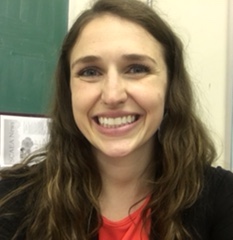 Special Education (Penn State)
Special Education (Penn State)
babb.salena@gmail.co
Background: I received my undergraduate degree in Spled K-12 from Penn State. Prior to entering the doctoral program, I worked as an Autistic support teacher for grades K-12. The majority of my time was spent with high school students with ASD working on independent living skills, vocational skills, and transition services. During my time working with individuals with severe disabilities and complex communication needs I developed an interest in AAC and communication and the ways in which access to AAC promotes independence.
Current Interests: The areas of AAC that I am particularly interested in are implementing AAC within functional and vocational skills for adolescents with severe disabilities and CCN. I am also interested in the social interactions that occur during those activities and how to incorporate AAC within work and community settings.
Sample Presentation/Publication: As a first year doctoral student, I am just beginning my research activities. My first research project at Penn State is currently in progress and is an experimental study used to evaluate the effects of videos with integrated visual scene displays (provided on a tablet-based app) on the task independence and communication of a high school student with ASD in a vocational setting.
Dissertation Chair: Dr David McNaughton
Think Tank Presentation Topic and Discussion Starters
I am interested in promoting independence in functional living skills, vocational skills, and communication for individuals with severe disabilities and complex communication needs (CCN) in community settings. I am currently conducting a study that evaluates the effects of videos with integrated visual scene displays (VSDs) on a tablet-based app (i.e., video VSD app) on the percent of steps completed and communication opportunities fulfilled by a high school student with autism spectrum disorder within a vocational activity. The current in-progress data provides preliminary support that videos with integrated VSDs may be successful in increasing independent participation and communication for individuals with CCN and ASD in vocational contexts within the community setting.
I would like to extend this research to include additional participants, additional communicative opportunities, and additional contexts within the community for functional, vocational, and leisure activities. Some challenges to this include scheduling with participants (whether in the school or day program setting), identifying tasks in which participants are not currently independent and also require communication, and assessing whether to teach participants one skill or multiple skills.
My research questions are:
1) How can we better code behaviors (methodologically) that occur out of sequence but are not performed ‘incorrectly’?
2) Are there other ways to integrate more ‘natural’ communicative opportunities for vocational tasks taking place in a single setting?
3) Is there a better way to teach how to ‘use’ the technology possibly prior to the intervention? Options for this?
4) How can we extend this study to other participants in other settings? What are the strengths/limitations to different approaches? (i.e, teach one task to all participants, multiple tasks, etc.)
Comments are closed.